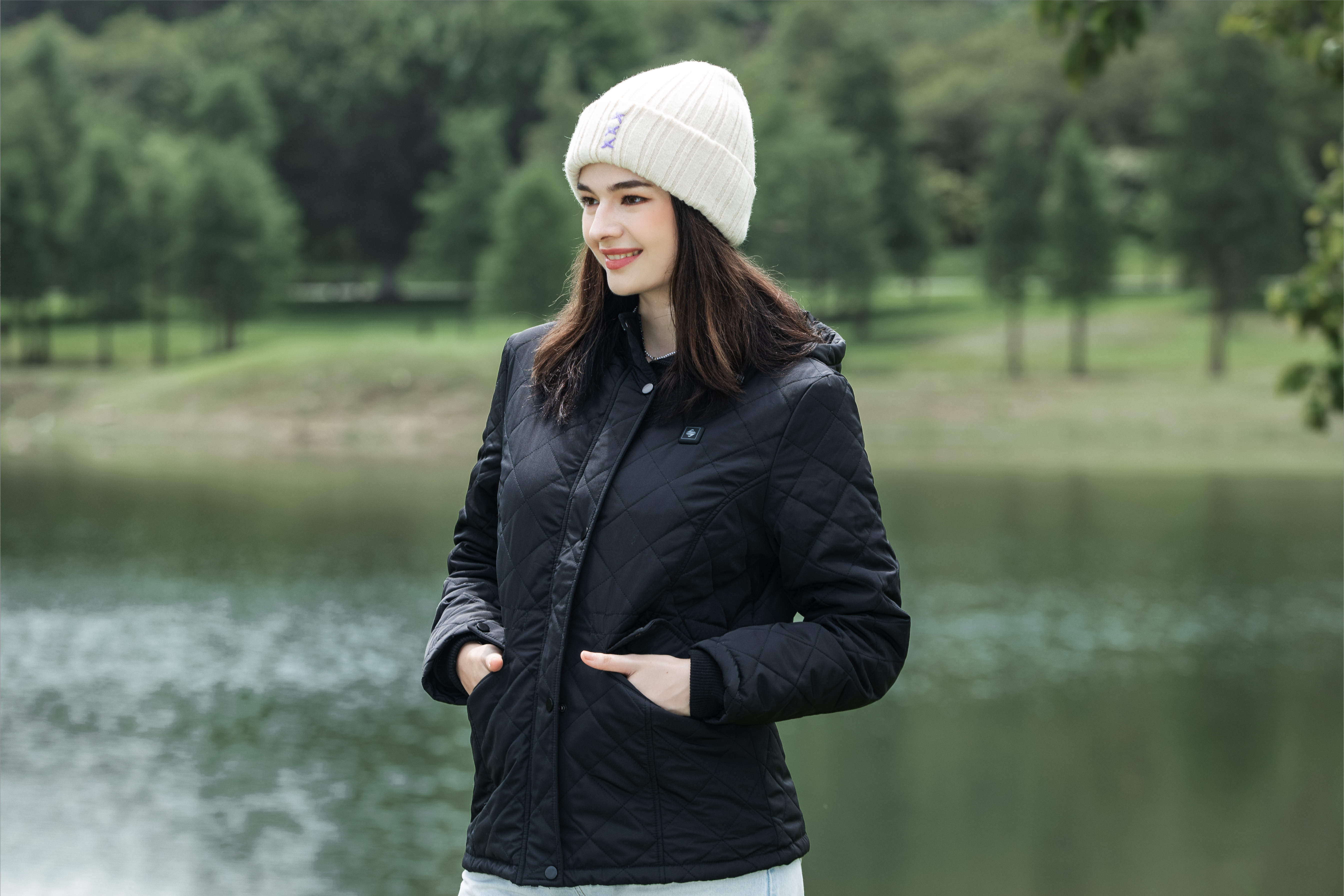The Best Power Bank for a Heated Vest

Exposure to freezing temperatures without thermal protection can be a risky endeavor. People in colder regions are inclined towards the use of heated clothing to save themselves during harsh weather. This apparel not only provides instant comfort but also has significant therapeutic advantages, such as reducing muscle soreness and improving focus.
However, keeping these heated vests running at such low temperatures can be difficult. To complete several activities in these areas, people opt to carry the vest along with them. As portability is a high requirement here, power banks are an integral element in keeping the heated vest running.
Many manufacturers have come up with compact power banks to provide electricity to the vest for long hours. It enhances the overall performance of the vest without having to stay connected to a power outlet. SGKOW takes the edge in this regard. All their heated vest for men and women options come with a power bank as an accessory with the whole heated vest set.
Along with this, they come with Gallium Nitride chargers. These have high thermal stability and offer fast charging ability. SGKOW’s GAN chargers are worth mentioning here as they affect the charging capacity and longevity of the battery pack.
It is, however, not sold separately, as they have designed each power bank to be compatible with the respective vest. In this article, we will discuss how power banks allow for the smooth running of a heated vest and all its advantages in detail.
The Fundamentals of Heated Vests
Basic Working of Heated Vests
Heated clothing is a hot commodity in the current era, and heated vests are a modern clothing element vastly used. Thin wires are utilized in a heated vest to generate heat, which is its primary source of work. These are generally warmed up by passing an electrical current through the heating element.
These are generally composed of carbon fiber or metal compounds that are highly conductive. Powered by rechargeable batteries, an electrical current is passed through these heating wires woven into the fabric. This warms the inside of the vest uniformly.
The user can control the temperature intensity of the heat provided with the thermostat placed on the chest area of the vest. The battery pack is usually stored in the pocket of the heated vest. Its capacity can be up to a few hours and can run smoothly. SGKOW’s battery packs can be charged fast with the GaN chargers, which are innovative technology composed of semiconductors. This modern equipment allows efficient charging of the battery pack and helps it operate for long without degrading the battery’s inner components.
Significance of a Reliable Power Bank
A portable source of power provision is a power bank's primary function in a heated vest. This is independent of an electrical power source and offers a long run-time for equipment. It can also work as a lifesaver in emergencies.
One of its big uses is offering the power source for the heated elements in a heated vest. It can come in handy to avoid hypothermia. Without having to look for an outlet, users can utilize a power bank while traveling, in the car, or even during a sporting activity. During power outages as well, they can be extremely useful.
The higher the capacity of a battery, the longer it can last. In this regard, SGKOW’s heated vests come with a battery pack power bank. Their women’s heated vest comes with a power bank of 10,000 MAH, with phone charging available as well. It comes with an instant C-port fast charging and electric source provision.
What to Look for in a Power Bank for Heated Vests
Power banks are potentially a necessity when a user is on the go. But there are a few things that you should consider before buying a power bank. We have elaborated on a few of them below.
Capacity (mAh)
Storage directly depends on the capacity of a power bank. If its capacity is high, then it can provide electric power for a longer time. The capacity of a heated vest battery pack is usually measured in milliampere-hours (mAh).
As a rule of thumb, it is considered that a power bank should be chosen that has at least 6–8 hours of run time. SGKOW’s battery packs are ideal in this regard, as they have a discharging time of 8–10 hours, which is excellent in a number of scenarios.
Output Voltage and Current
Compatibility is essential when considering the output current and output voltage of a power bank for a heated vest. The design of the heated vest from the manufacturer’s manual elaborated on this factor. If the heated vest requires an output voltage of 7V, then its power bank should be capable of it.
So is the case with SGKOW’S Classic Men’s Heated vest. It has a power bank/ battery pack of 7.4 V, which aligns with the vest’s requirement. It optimizes performance along with enhancing the longevity of the heated vest.
Size and Weight:
Different heated vests weigh differently because of the material used in them, along with the power bank used. Users buying them should consider the fact that the power bank that comes along with the vest is lightweight. It should be highly portable and easy to travel with.
It should be small enough to fit in the vest’s pocket easily. SGOW’s heated vests come with power banks as an accessory which are compact along with being ultra-lightweight. Their men’s lightweight vest is ideal. But they do not compromise on performance.
Durability
Another factor to consider before making a purchase is the ability of the power bank to withstand harsh weather conditions. They should be composed of high-quality, sturdy materials. Wear-and-tear is normal in these conditions, as heated fleece vests are worn in freezing temperatures.
The outer covering of the battery pack should be made of a long-lasting insulating material that keeps the inner contents safe. Along with this, its material should be strong enough to withstand possible falls from substantial heights.
Safety Features
Keeping yourself safe while wearing a heated vest is the key element to keep in mind. High grades usually come with power banks connected to heated vests that have in-built safety features. It should have overcharging and overheating protection.
This mechanism disconnects the battery pack from the heated vest automatically once it reaches a specific temperature for prolonged hours. It should also have short-circuit protection to avoid battery explosions and potential fire hazards.
This feature enables the battery pack to disconnect from the heating elements when voltage fluctuates within the circuit. It can save you from burns and damage.
Advantages of Investing in a Quality Power Bank
1. Extended Heating Duration
Battery performance is a direct benefit of a quality power bank. Failing and malfunctions are rare when the power bank is durable. Fast power delivery is the main feature here, and it enables prolonged heating time.
This is due to the higher battery capacity. You can get more than 6 hours of heated comfort before you have to charge the battery again. SGKOW’s womens heated fleece vest battery pack has an excellent running time range. Even under adverse conditions, such as temperatures as low as -20 degrees Celsius, they are able to keep performing at a high level.
2. Energy Efficiency
Superior power banks are manufactured to minimize power consumption. This implies that there is less energy wasted during charging. In addition to being environmentally friendly, this makes better use of the power bank's available capacity.
3. Enhanced Safety
Temperature control is one efficient feature of a heated vest that keeps the users from sustaining burns or overheating. Because of having other in-built safety characteristics like overcurrent protection, it allows for safe usage.
SGKOW’s heated vests come with temperature sensors that automatically control the heated vest’s temperature to provide optimum comfort to the user.
4. Longer Lifespan
The battery components are highly reliable for a premium power bank. They do not degrade within a short span of time. Due to this, they offer efficient charging and heating over longer periods. Owing to their quality, they are less likely to get damaged and don’t need replacement. They can last you more years and can prove to be budget-friendly.
SGKOW comes with the ideal heated vest for women as well as men with a battery pack. Heated garments, batteries, and a battery charger are all part of their whole wardrobe set. The chargers use advanced GaN nitride technology, which elongates the battery’s running time.
Power delivery rates from GaN chargers are quite rapid. Because of its great conversion efficiency, the GaN charger is able to provide powerful charging in a small volume. It improves the charger's portability. This altogether boosts the longevity of the heated vest’s battery pack.
Tips for Maintaining and Using Your Power Bank
Proper Charging Practices
- Always disconnect the power bank from the heated vest If not in use.
- Charge the power bank from the charging cable provided with the power bank. This ensures the compatibility and optimal charging of the power bank for longevity.
- Once connected to the power outlet, even If it takes several hours, let it get charged completely.
- When the power bank is entirely charged, disconnect it from the power outlet to prevent overcharging.
- Don’t let it overcharge, as it can lead to deterioration of internal components or battery, along with bedding on fire risk.
- During the charging time of the power bank, avoid using it as this can reduce its lifespan.
Storage Tips for Cold Weather
- Try to keep the battery pack charged at 20% at least at all times. It enables longer battery preservation in freezing weather conditions.
- A carrying case or a thermally insulated pouch is a must to store the battery pack in cold weather. It allows no moisture to seep in and keeps the battery dry and safe.
- Avoid storing the power bank near metal objects, as it can be damaging to the battery.
- It’s important to warm up a battery pack to use it in icy weather. Keeping it in your pocket can provide it with a little bit of your body heat and help it give uniform power when connected. It enhances overall performance.
Safety Precautions
- In case the power bank is cracked, chipped, or has any bulges, avoid using it. Check for any damages regularly to avoid any explosions.
- Prevent overcharging the power bank by disconnecting it once it’s reached its fully-charged time.
- Exposing to water or other liquids can cause internal damage to the battery components. This can result in fires.
- If you see a visible crack or damage to the battery pack, do not try to disassemble it manually. The inner parts of a power bank can be toxic, which can be dangerous If not handled with care. Always take it to a certified technician to get repaired or replace the battery pack when necessary.
- Prevent leaving the power bank unattended when charging.
Alternative Power Sources for Heated Vests
Although power banks are the most efficient source of providing electricity to a heated vest, there are other options available as well.
Built-in Rechargeable Batteries
Some heated vests are powered by Lithium-ion batteries which are built with the circuit of the vest. These offer a high battery capacity and can be customized depending on the manufacturer.
- They offer fast charging capacity and instant heat.
- These do not degrade easily.
- These are easy to charge by connecting to a power outlet.
- They can be heavy to carry around.
12V Vehicle Battery
A heated vest can be charged using a 12V battery while you are sitting in your car. Adapters can be used to connect the power bank to the battery source easily.
- It allows for extended run time with no worry because of high battery capacity.
- This solution is not permanent or portable.
- It can drain your car’s battery, If overused.
Solar-powered Options
Apart from the power bank, heated vests are also supported by solar charging options. Solar chargers are easily available now.
- They provide a renewable source of energy.
- These are highly portable.
- They can be budget-friendly apart from the initial cost.
- Their charging time can be slow.
- They are only ideal in sunlight and not functional indoors.
Fuel-Powered Options
The last option we want to discuss is the heated vests that consume fuel in order to heat up. Butane and propane can be used as sources of their energy.
- These are ideal for freezing conditions as they have high heat-producing capacity.
- Due to having flammable materials, they need careful handling, or they can cause explosions.
Conclusion
Heated clothing is adopted by many individuals who frequently have to travel to or live in cold weather. Power banks are a necessary accessory that comes along with a heated vest. They work by offering connectivity to the battery pack’s terminal and giving enough power to initiate heating the vest. They should be used carefully during charging. Reading the manufacturer’s manual is important when storing or using them. This allows for longer usage and convenience.
FAQs
How often should I charge my power bank?
If you use your power bank regularly, recharge it after every use as needed. The recommended charging rate for power banks with a 10000mAh or higher capacity is every 1–3 months. In case you plan to store it for longer times, then at least keep it at 20% charging, so the battery doesn't die completely.
Can I use any power bank with my heated vest?
It all comes down to power output compatibility and the requirements of the power bank with the heated vest. Before connecting with a power bank, it is recommended that you first verify the vest's recommended power specifications. These can differ in output from the power bank. Some vests, for example, have a power requirement of 7V, so a power bank with a 7V power output is ideal.























Leave a comment